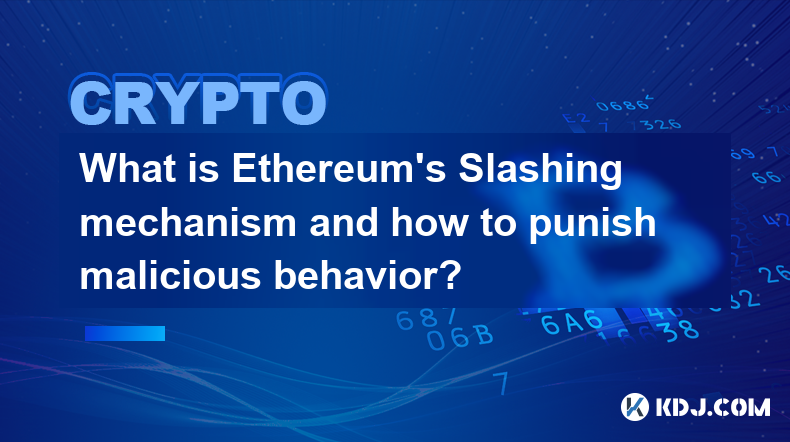-
 Bitcoin
Bitcoin $84,865.6249
0.79% -
 Ethereum
Ethereum $1,616.4828
-1.25% -
 Tether USDt
Tether USDt $0.9999
0.01% -
 XRP
XRP $2.1359
0.36% -
 BNB
BNB $585.2393
-0.33% -
 Solana
Solana $130.1878
0.94% -
 USDC
USDC $1.0000
0.01% -
 TRON
TRON $0.2474
-2.44% -
 Dogecoin
Dogecoin $0.1556
-3.40% -
 Cardano
Cardano $0.6253
-1.68% -
 UNUS SED LEO
UNUS SED LEO $9.3493
-0.57% -
 Avalanche
Avalanche $19.6244
-1.51% -
 Chainlink
Chainlink $12.3812
-3.02% -
 Stellar
Stellar $0.2397
-0.18% -
 Toncoin
Toncoin $2.9591
6.02% -
 Sui
Sui $2.1602
-3.47% -
 Shiba Inu
Shiba Inu $0.0...01186
-2.02% -
 Hedera
Hedera $0.1634
-0.46% -
 Bitcoin Cash
Bitcoin Cash $323.8859
-2.13% -
 Litecoin
Litecoin $76.2082
-1.02% -
 Polkadot
Polkadot $3.6088
-2.69% -
 Dai
Dai $1.0000
0.02% -
 Hyperliquid
Hyperliquid $15.7577
0.72% -
 Bitget Token
Bitget Token $4.3060
1.28% -
 Ethena USDe
Ethena USDe $0.9992
0.02% -
 Pi
Pi $0.6652
-9.83% -
 Monero
Monero $215.2989
2.71% -
 Uniswap
Uniswap $5.2842
-2.32% -
 OKB
OKB $51.6972
-2.73% -
 Pepe
Pepe $0.0...07220
-2.27%
What is Ethereum’s staking, and how to participate and earn money?
By participating in Ethereum's Proof-of-Stake (PoS) mechanism, users can stake their ETH to earn passive income, support the network, and strengthen its security without incurring high computational costs or energy consumption.
Feb 19, 2025 at 04:37 pm

Key Points:
- Understanding Ethereum's Staking Mechanism
- Steps to Participate in Staking
- Benefits and Rewards of Staking
- Security and Risk Considerations
- Technical Requirements and Hardware Options
- Potential Challenges and Troubleshooting Tips
- FAQs on Ethereum Staking
What is Ethereum's Staking?
Proof-of-Stake (PoS) is a consensus mechanism used in blockchain networks to validate transactions and secure the network. Unlike Proof-of-Work (PoW), which relies on computational power, PoS uses the amount of cryptocurrency held by a user (staker) to determine their influence in the network.
In Ethereum's case, users can stake their ETH tokens to participate in the network and earn rewards. The more ETH staked, the higher the chances of being chosen to validate new blocks and earn rewards.
Steps to Participate in Staking:
1. Get an Ethereum Wallet:
Choose a reputable Ethereum wallet such as MetaMask, Ledger, or Trezor. These wallets support staking and provide security for your ETH.
2. Purchase ETH Tokens:
Acquire ETH tokens from a cryptocurrency exchange or trading platform. You will need a sufficient amount of ETH to meet the minimum staking requirement, which varies depending on the platform you choose.
3. Choose a Staking Platform:
Select a staking platform or pool that offers Ethereum staking. There are various platforms available, each with different fees, rewards, and minimum staking amounts.
4. Stake Your ETH:
Follow the instructions provided by the staking platform to stake your ETH. You may be required to create a staking account and deposit your ETH into a designated staking pool.
5. Start Earning Rewards:
Once staked, your ETH will start generating rewards based on the amount staked and the platform's reward structure. Rewards are typically distributed daily or weekly.
Benefits and Rewards of Staking:
- Passive Income: Stake your ETH and earn rewards without actively trading or investing.
- Support Ethereum Network: Strengthen the Ethereum network and contribute to its security and efficiency.
- No High Computational Costs: Unlike PoW, PoS does not require expensive hardware or high energy consumption.
- Control Over Your Assets: You maintain ownership of your staked ETH and can unstake your tokens at any time (with a possible waiting period).
Security and Risk Considerations:
- Smart Contract Risk: The staking platform you choose must have a secure and reputable smart contract.
- Key Management: Keep your private key or seed phrase safe to avoid losing access to your staked ETH.
- Unbonding Time: When unstaking your ETH, there may be a waiting period or "unbonding time" before you can access your funds.
- Network Instability: The Ethereum network can experience occasional downtime or volatility, which may affect rewards.
- Slashing Risk: Misbehavior or malicious activity could result in penalties and loss of staked ETH.
Technical Requirements and Hardware Options:
- Internet Connection: A stable internet connection is necessary for staking.
- Staking Node: Some platforms require you to run a staking node, which can require advanced technical knowledge.
- Staking Pool: Joining a staking pool allows you to stake your ETH without running your own node.
- Recommended Hardware: For running a staking node, consider a dedicated computer with a reliable internet connection and ample storage capacity.
Potential Challenges and Troubleshooting Tips:
- Staking Minimums: Different platforms may have different minimum staking requirements. Check if you have sufficient ETH to meet these.
- Network Congestion: High network traffic can lead to delayed staking transactions or lower rewards.
- Unforeseen Events: Network upgrades or hard forks can affect staking rewards or platform availability.
- Technical Support: Contact the staking platform's technical support team if you encounter any staking-related issues.
FAQs on Ethereum Staking:
- What is the minimum staking requirement?
The minimum staking requirement varies between platforms. Some platforms require as little as 32 ETH, while others may have higher minimums. - What is the annual percentage yield (APY) from staking?
The APY for staking ETH can vary depending on the network conditions and the staking platform used. It can range from 4% to 10% or more. - Can I stake fractional amounts of ETH?
Some staking platforms allow you to stake fractional amounts of ETH. This feature may be useful if you do not have the minimum amount of ETH required for solo staking. - What happens if I unstake my ETH?
When you unstake your ETH, it may take some time before you can access your funds. This waiting period is known as the "unbonding time" and can vary between platforms. - Is staking ETH safe?
Staking ETH can be a relatively safe investment if you choose to use a reputable staking platform and follow security best practices. However, it is important to be aware of the potential risks and take appropriate measures to minimize them.
Disclaimer:info@kdj.com
The information provided is not trading advice. kdj.com does not assume any responsibility for any investments made based on the information provided in this article. Cryptocurrencies are highly volatile and it is highly recommended that you invest with caution after thorough research!
If you believe that the content used on this website infringes your copyright, please contact us immediately (info@kdj.com) and we will delete it promptly.
- Bitcoin price hovers around $85k as ETH, XRP and SOL stabilized near key resistance levels
- 2025-04-15 23:55:12
- Shiba Inu (SHIB) price remained in a tight range at a crucial support level as the token's burn rate gained momentum.
- 2025-04-15 23:55:12
- Optimum, a Decentralized, Performance-Enhanced Memory Layer for Any Blockchain, Raised an $11 Million Seed Round
- 2025-04-15 23:50:15
- KiloEx DEX Offers Hacker 10% Bounty to Return $7.5M Stolen Crypto
- 2025-04-15 23:50:15
- The Mechanisms That Establish and Maintain Bitcoin's Value Proposition in a Digital Economy
- 2025-04-15 23:50:13
- The Rise of RLUSD Stablecoin Has Sparked Discussions About XRP's Future Role in Ripple's Ecosystem
- 2025-04-15 23:50:13
Related knowledge

What is Ethereum’s Slashing mechanism and how to punish malicious behavior?
Feb 20,2025 at 03:08am
Key PointsOverview of slashingDifferent types of slashing in EthereumIncentives and consequences of slashingIdentifying and reporting slashed validatorsOngoing discussions and potential improvementsEthereum's Slashing Mechanism: Punishing Malicious BehaviorEthereum's slashing mechanism is an essential tool for ensuring network security and punishing mal...

What is the verifier node of Ethereum and how to become a verifier?
Feb 19,2025 at 06:00pm
The Verifier Node of Ethereum: A Comprehensive GuideKey Points:What is a Verifier Node?How to Become a Verifier NodeResponsibilities and Rewards of a Verifier NodeMinimum Requirements for Becoming a Verifier NodePotential Difficulties in Running a Verifier Node1. What is a Verifier Node?A Verifier Node is an independent entity on the Ethereum network th...

What is Ethereum’s staking, and how to participate and earn money?
Feb 19,2025 at 04:37pm
Key Points:Understanding Ethereum's Staking MechanismSteps to Participate in StakingBenefits and Rewards of StakingSecurity and Risk ConsiderationsTechnical Requirements and Hardware OptionsPotential Challenges and Troubleshooting TipsFAQs on Ethereum StakingWhat is Ethereum's Staking?Proof-of-Stake (PoS) is a consensus mechanism used in blockchain netw...

What is Ethereum’s DAO (Decentralized Autonomous Organization) and how does it work?
Feb 20,2025 at 03:12am
Key PointsDefinition and Structure of a DAOGovernance and Decision-Making in DAOsBenefits and Use Cases of DAOsChallenges and Limitations of DAOsWhat is Ethereum's DAO (Decentralized Autonomous Organization) and How Does It Work?Definition and Structure of a DAOA Decentralized Autonomous Organization (DAO) is an innovative governance and management fram...

What is Ethereum's multi-signature wallet and how to improve security?
Feb 20,2025 at 02:18pm
Key Points:Understanding the Concept of a Multi-Signature WalletBenefits and Drawbacks of Multisig WalletsRequirements for Setting Up a Multisig WalletStep-by-Step Guide to Generating a Multisig WalletImplementing Strategies for Enhanced Security1. Understanding the Concept of a Multi-Signature WalletA multi-signature (multisig) wallet in the Ethereum e...

What is Ethereum's oracle and how to provide data for smart contracts?
Feb 21,2025 at 01:30am
Key Points:Understanding the concept of oracles in EthereumExploring different types of oraclesDetailed guide on how to provide data for smart contractsAddressing potential challenges and considerationsWhat is Ethereum's Oracle?Oracles are crucial components in the Ethereum ecosystem, enabling smart contracts to access real-world data and off-chain even...

What is Ethereum’s Slashing mechanism and how to punish malicious behavior?
Feb 20,2025 at 03:08am
Key PointsOverview of slashingDifferent types of slashing in EthereumIncentives and consequences of slashingIdentifying and reporting slashed validatorsOngoing discussions and potential improvementsEthereum's Slashing Mechanism: Punishing Malicious BehaviorEthereum's slashing mechanism is an essential tool for ensuring network security and punishing mal...

What is the verifier node of Ethereum and how to become a verifier?
Feb 19,2025 at 06:00pm
The Verifier Node of Ethereum: A Comprehensive GuideKey Points:What is a Verifier Node?How to Become a Verifier NodeResponsibilities and Rewards of a Verifier NodeMinimum Requirements for Becoming a Verifier NodePotential Difficulties in Running a Verifier Node1. What is a Verifier Node?A Verifier Node is an independent entity on the Ethereum network th...

What is Ethereum’s staking, and how to participate and earn money?
Feb 19,2025 at 04:37pm
Key Points:Understanding Ethereum's Staking MechanismSteps to Participate in StakingBenefits and Rewards of StakingSecurity and Risk ConsiderationsTechnical Requirements and Hardware OptionsPotential Challenges and Troubleshooting TipsFAQs on Ethereum StakingWhat is Ethereum's Staking?Proof-of-Stake (PoS) is a consensus mechanism used in blockchain netw...

What is Ethereum’s DAO (Decentralized Autonomous Organization) and how does it work?
Feb 20,2025 at 03:12am
Key PointsDefinition and Structure of a DAOGovernance and Decision-Making in DAOsBenefits and Use Cases of DAOsChallenges and Limitations of DAOsWhat is Ethereum's DAO (Decentralized Autonomous Organization) and How Does It Work?Definition and Structure of a DAOA Decentralized Autonomous Organization (DAO) is an innovative governance and management fram...

What is Ethereum's multi-signature wallet and how to improve security?
Feb 20,2025 at 02:18pm
Key Points:Understanding the Concept of a Multi-Signature WalletBenefits and Drawbacks of Multisig WalletsRequirements for Setting Up a Multisig WalletStep-by-Step Guide to Generating a Multisig WalletImplementing Strategies for Enhanced Security1. Understanding the Concept of a Multi-Signature WalletA multi-signature (multisig) wallet in the Ethereum e...

What is Ethereum's oracle and how to provide data for smart contracts?
Feb 21,2025 at 01:30am
Key Points:Understanding the concept of oracles in EthereumExploring different types of oraclesDetailed guide on how to provide data for smart contractsAddressing potential challenges and considerationsWhat is Ethereum's Oracle?Oracles are crucial components in the Ethereum ecosystem, enabling smart contracts to access real-world data and off-chain even...
See all articles























































































